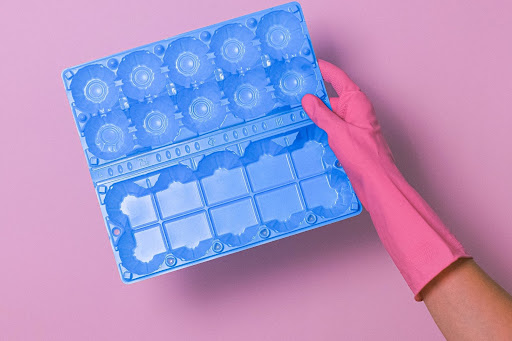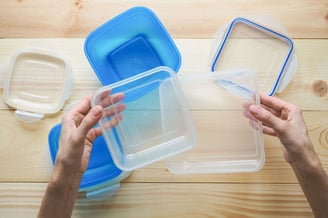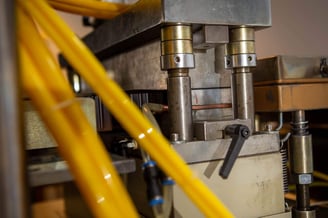What Are the Different Types of Thermoforming For Packaging Trays?

Thermoforming is a plastic manufacturing term referring to how the plastic is heated, cooled, and hardened. At Ready-Made, we use thermoforming to make durable and impact-resistant standard and custom trays. This basic process can be adapted based on the final product, so we'll look at different methods and how they work.
Pressure and Vacuum Forming
Between these two common thermoforming techniques, you'll generally see vacuum forming in industries that need heavy-duty equipment, whereas you'll see pressure forming for more nuanced items.
With vacuum forming, the first step is stretching the plastic out over a mold. It is then heated, and the single-surface mold will continue to spread and shape the plastic with a vacuuming force. Often seen in weather-resistant equipment or airplane parts, only certain types of plastic (e.g., PVC, PET, HDPE, etc.) can handle this treatment.
Pressure forming shares a lot of similarities with vacuum forming, but it relies on compressed air to shape the sheet. On the other side of the sheet is a pressure box that's used to give the plastic more details. It's particularly useful for products like utensils, medical devices, or exterior panels that need controls.
If you're interested in injection molding vs. thermoforming, injection molding requires molten plastic to be injected into the mold. Once the mold has cooled, the plastic part can then be removed. Pressure forming and injection molding share some similarities, in that they can both be used for more detailed parts and involve a mold, but injection molding tends to be used for more complex intricacies of the part and is a less cost-effective process.
Gauge Thermoforming
The word 'gauge' in the industry is a reference to the thickness of the plastic. With thin-gauge thermoforming, the plastic is typically between .01 to .06". while thick-gauge thermoforming is anywhere between .06 to .5". You'll typically see thick gauge thermoforming used for vehicle panels, exercise equipment, plastic sheds, refrigerator liners, or electronics. Thin-gauge products are more likely to be seen for food, cosmetics, or recyclable products.
Match Mold Forming
This type of thermoforming starts with two molds. These molds are usually made from either metal or aluminum, and they have the same reverse shape as the finished part. With this process, the plastic is heated at a specific temperature, and the molds are heated at a slightly lower temperature than the plastic sheet (so the plastic doesn't stick to the mold). From there, the sheet is then placed between the mold, the molds are clamped together, and then the part is cooled so it can be removed. You'll usually see this done for smaller parts, such as bowls or trays. However, it can also be used for bigger, more intricate parts like car dashboards.
Twin Sheet Forming
Twin sheet forming starts with two sheets of plastic that are simultaneously heated, shaped, and then pressed together. These sheets are usually joined by a weld at the edges, which makes for a durable joint on a single part. This process can be used for a variety of parts, including door panels, medical incubators, and HVAC ducts. It's ideal for objects that need a hollow interior because the edges can be aligned and secured to make the final product. During twin sheet forming, sheets start off on two different molds, and a vacuum pushes the sheet onto the mold. Once the bottom mold is closed, the two are pressed together.
Benefits of Thermoformed Plastics
There are multiple benefits of thermoformed plastic:
- Portable: Thermoformed plastic is easy to package and move. It's also impact- and weather-resistant, which makes it relatively immune to harsh conditions of every variety.
- Economical: Small and large businesses alike use thermoformed plastic. The materials are relatively inexpensive, which allows higher production rates for lower spend.
- Customizable: Different industries make use of thermoformed plastics because they can be easily adapted to meet your needs.
- Environmentally friendly: Thermoformed plastics can be recycled, which makes for a more sustainable option for companies looking to cut back on their carbon footprint.
Ready-Made Plastic Trays: Contact Us for Thermoformed Trays
Ready-Made Plastic Trays can help you find the thermoformed packaging trays that are ideal for your products and your business needs. We work with a variety of industries, including food/beverage, automotive, aerospace, and medical. When you need to secure your products in trays that can handle the heat, we've done the research and the testing to ensure our products stand the test. Contact us today to learn more about how we can help!


.jpg?length=328&name=Depositphotos_185373910_S%20(1).jpg)

